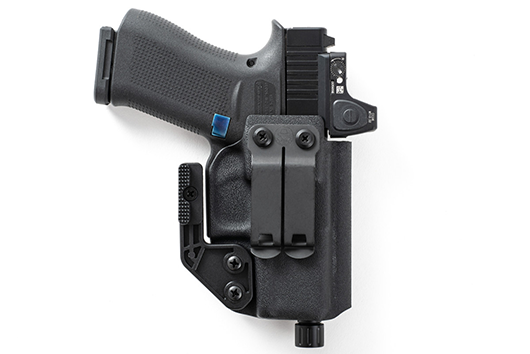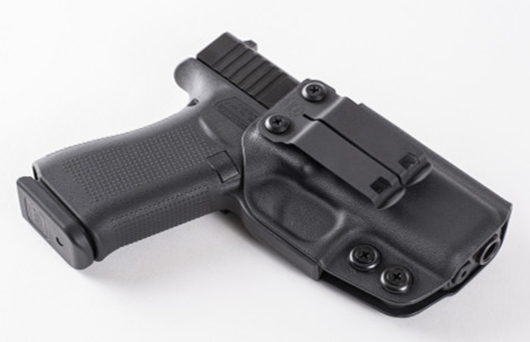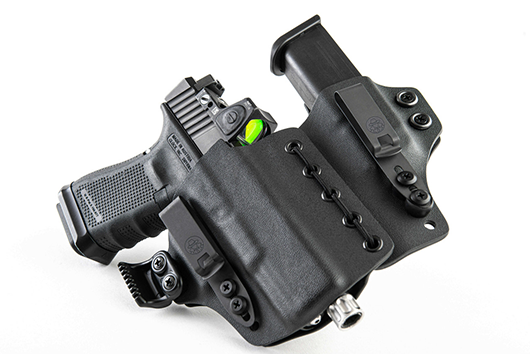Learn Concealed Carry Life Hacks and Tips
Dec 5th 2021
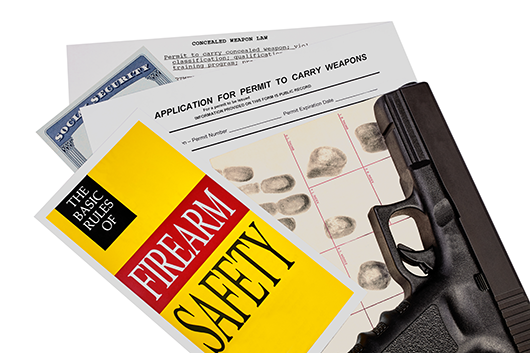
The decision to carry a concealed handgun for self-defense requires careful consideration regarding mindset, tactics, accessories, the law, and training. Once you’ve started carrying your weapon, there are various tips and tricks you can use to ensure you remain safe and in control.
Mental Preparedness is Crucial
If you carry a concealed handgun for self-defense, you need to be alert and aware of your surroundings at all times. Col. Jeff Cooper developed a color code of mental awareness at Gunsite Academy in Arizona, which consists of four conditions: White, yellow, orange, and red.
Contrary to some claims, these conditions do not indicate the level of danger you face. Instead, they refer to your awareness and willingness to take necessary action according to environmental stimuli. The four conditions are:
White
In Condition White, you are unaware of your surroundings and unprepared to take action. If you’re attacked in White, you may be surprised and unable to respond appropriately, increasing your vulnerability.
Yellow
In Condition Yellow, you are aware of your surroundings but not focused on a specific threat. You understand you may have to use deadly force to save your life and are willing to take action to defend yourself if necessary. This is a condition of relaxed alertness designed to prevent you from being surprised by an assailant.
Orange
In Condition Orange, you have identified a potential threat. However, this does not indicate that you will draw or fire your weapon. In Yellow and Orange, you don’t need to be armed, although it is beneficial.
In Orange, you should monitor the potential threat until it dissipates or becomes an actual threat. When you shift into Orange, you should also maintain general awareness to avoid decoys.
Red
In Red, you have an identifiable threat, such as a person who has the ability, opportunity, and intent to cause you serious bodily injury or death. This is fight mode.
At this moment, if you’re armed, your weapon should be in your hands. However, Red does not indicate that you will fire; it suggests that you will fire if your assailant performs a specific action, such as raising a weapon toward you.
Readiness to Use Deadly Force
The purpose of the handgun you carry is to stop a criminal assailant from killing or seriously injuring you or another person. You may not have to fire your weapon to achieve this effect, but you should be prepared for the possibility that you will have no other choice.
If you’re opposed to the use of deadly force under all circumstances, you shouldn’t risk carrying a firearm, as your assailant may sense your unwillingness to use it and call your bluff. An attacker could take your weapon and use it against you in the worst-case scenario.
Exercise Restraint
In addition to mental preparedness, you need to exercise self-control. Self-defense includes avoidance: Knowing how and when to avoid and de-escalate confrontations. If, despite your best efforts, you find yourself in a heated argument, never expose or allude to your firearm to intimidate your opponent. You could be charged with brandishing a firearm or escalate a verbal disagreement to physical violence.
The firearm is your last resort when all other attempts to avoid or defuse a situation have failed or are unavailable to you. Many gun owners report feeling an increased sense of internal calm while carrying a gun. This might be a reflection of the power you have at your disposal and the potential consequences of giving into anger.
Study the Law
Every state has different statutes regarding the use of deadly force. These laws outline under what circumstances you can legally use or threaten to use deadly force in self-defense. If you attend a concealed carry class taught by a certified instructor, discussing your state’s laws regarding deadly force should be part of the curriculum. If it’s not, or you still have questions, research the statutes yourself and consult an attorney if necessary.
However, the legal considerations of concealed carry are not limited to deadly force. You will need to know your state’s carry law (exactly where you can and can’t carry your weapon).
For example, in several states, it is illegal to carry a firearm in a business that is licensed to sell alcohol for on-premises consumption. Police stations, courthouses, jails and prisons, and state parks often prohibit the wearing of firearms, while private businesses may also post signs prohibiting them on the premises.
Buy a Quality Gun
If you’re new to firearms, you should invest in a high-quality firearm. A quality gun isn’t necessarily the most expensive weapon in the dealer’s display case. CZ, Glock, SIG, Ruger, and Smith & Wesson manufacture reliable, effective, and affordably priced handguns for concealed carry.
Regardless of the make and model, you’ll need your handgun to meet a few requirements to be suitable.
Concealability
Your self-defense handgun doesn’t have to be a full-size service pistol. You can carry a full-size gun if you want to, but it can complicate concealment and limit your wardrobe options.
Concealed carry handguns tend to be compact or subcompact semi-automatic pistols or snub-nosed revolvers. These weapons are easier to conceal effectively under different kinds of clothing. However, a lightweight handgun is harder to control and recoil, assuming the same caliber and load.
Reliability
Regardless of whether you carry a semi-automatic pistol or a revolver, your concealed carry weapon (CCW) should be 100% reliable with your preferred load. If your weapon is new, it’s generally recommended that you fire a minimum of 200 rounds of ammunition in it to ensure it cycles reliably.
Power
Your ability to stop your assailant depends, to an extent, on how accurately you can fire the weapon. However, both the caliber and the load affect the terminal wounding performance and the effectiveness of your shots. Select a caliber that delivers sufficient power at close range to incapacitate a determined adversary without sacrificing controllability reliably.
Many gun owners consider the .380 ACP to be the minimum acceptable caliber for this purpose. The type of cartridge load is also necessary and affects the penetration depth and expansion of the bullet.
Learn About Your Firearm
It isn’t enough to purchase a firearm; you must also learn to operate it safely and effectively. Always read the owner’s manual for any gun you buy and learn how to disassemble, clean, lubricate, and re-assemble your firearms, especially those you intend to rely on daily for self-defense.
Learn and practice basic gun safety. In 21 states, you can carry a concealed handgun without a permit. When no gun safety classes are required, it’s your responsibility to seek this information or train yourself. You should also research gun safes. Keeping your weapons secure when you’re not at home is important for preventing theft.
Practice Carrying Under Different Conditions
It’s one thing to carry your firearm on a shooting range, but to determine the most comfortable, concealable, and suitable carry position, you’ll need to carry the weapon while standing, sitting, crouching, and moving. You should also practice vehicle carry. While sitting in the driver’s seat, fasten the seatbelt and try drawing your weapon.
Some carry positions, such as strong side, are particularly difficult to draw from while the seatbelt is fastened. Others, such as appendix carry, are simpler, as the appendix position places the weapon in the front of the pants.
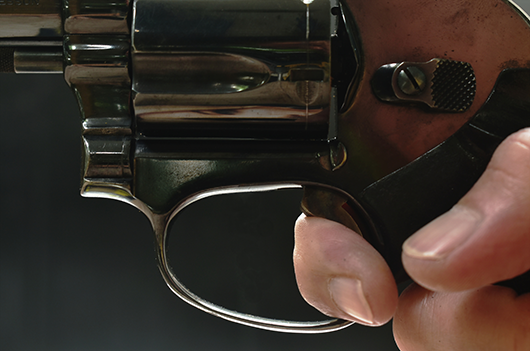
Practice and Dry Fire Your Gun
You should try to practice with your firearm as often as possible. Shooting is a perishable skill, so you need to maintain your skill once you’ve learned the fundamentals. Unfortunately, ammunition and range fees can be expensive.
An excellent way to maintain your proficiency with firearms when live-fire sessions are not viable is dry firing. This is the act of pressing the trigger and dropping the hammer or releasing the striker on an empty chamber or when using snap caps or dummy cartridges.
Invest in a High-Quality Holster and Gun Belt
A high-quality holster is one of the most essential accessories you can buy if you carry a gun; you also need a complementary gun belt.
Holster
Carrying a gun without a holster is not only dangerous; it’s illegal in some states. It doesn’t matter how you carry your firearm; even pocket carry requires a pocket holster to be safe and dependable.
Retention: IWB vs. OWB holsters
An active-retention holster that uses an external fastener or internal locking system is ideal for open carry because it securely holds your firearm. An example of an active retention holster for open carry is the OWB (outside-the-waistband) Incognito Concealment Level 2 UBL. In addition to the passive retention of the company’s standard Kydex holsters, there’s also a rotating hood to ensure the weapon remains secure at all times.
However, for concealed carry, an active retention system is less critical. An assailant who doesn’t know you’re carrying a gun won’t attempt to disarm you. When using an IWB (inside-the-waistband) holster, such as the Incognito T3, you also wear the weapon more closely against your body.
Under these circumstances, passive retention alone is sufficient. Passive retention describes the ability of the holster to hold the gun securely due to a snug fit. Incognito Concealment creates passive retention by thermoforming the Kydex holster to the weapon.
Safe carry
A holster needs to protect the weapon and reduce the risk of an unintentional discharge (whether accidental or negligent) by shielding the trigger guard. Avoid active-retention holsters that require you to depress a button with your index finger to unlock the firearm. Your finger should remain straight alongside the holster and frame of the weapon until the gun clears the holster and the muzzle is parallel to the ground.
Gun belt
The best holster is incomplete without a rigid, well-made gun belt. Ordinary dress belts are often too weak to support the weight of the firearm and keep your holster in the same position as you move throughout the day. It’s also possible that the belt clips or loops may abrade a dress belt, causing it to deform or fray.
Holsters for New and Experienced Shooters
At Incognito Concealment, our Kydex holsters are available for all major handgun brands, from CZ and Beretta to Glock and Smith & Wesson. Choose IWB or OWB configurations. Give us a call at (586) 333-4240, and we’ll help you find the best kind of holster for your weapon.





